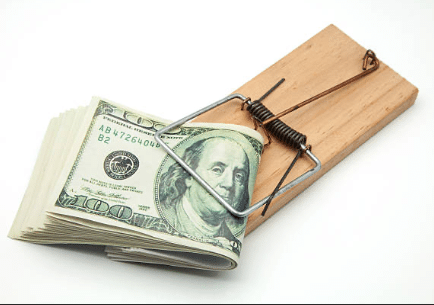Cove Capital Investments
- Why more and more investors are looking at debt-free real estate assets.
- Black swan events are real, and investing in leveraged real estate could exacerbate risk.
- Learn six Cash Flow Sweep Scenarios investors can avoid with debt-free DSTs.
Since our inception, Cove Capital has taken a contrarian approach to real estate investing in that we believe today’s current macroeconomic picture does not bode well for investors who are pushing for increased returns with the use of leverage. By investing in non-leveraged real estate offerings and avoiding those asset classes that have higher risk profiles, Cove Capital believes it has removed a significant portion of risk for investors while simultaneously improving the opportunity for capital preservation.
Cove Capital was a leader among Delaware Statutory Trust sponsor firms to provide investors with debt-free real estate investment options for their 1031 exchange and direct cash investments.
Here is a video on some of the benefits of investing in debt-free DST real estate.
Recent Black Swan Events Expose the Dangers of Debt
The good news is that now, more and more investors are waking up to the reality that investing in leveraged offerings may not be a prudent situation for them and that taking on an extra layer of risk may not be a good choice. As a result, more and more investors are coming to Cove Capital to invest in our portfolio of debt-free DST offerings and real estate funds.
For wealth advisers, broker dealers, registered representatives, and accredited investors, recent events such as the war in Ukraine, bank failures, and of course, the COVID-19 pandemic serve as reminders that black swan events are real and that using leverage comes with risk. The bottom line is that leverage comes with risk, which is always mentioned but rarely considered a realistic possibility. One of those risks that is very rarely examined is the concept of a “cash trap” or “cash flow sweep”.
The Cash Trap
In a financial agreement, such as a loan or an investment deal, a “Cash Flow Sweep” is a mechanism often used by lenders to protect their interests and mitigate risks associated with commercial real estate loans. In this arrangement, certain conditions trigger the diversion of excess of money generated by the property to pay down the loan principal.
For example, here are six very specific instances when a lender may require a full cash trap/cash flow sweep on commercial real estate:
- Debt Service Coverage Ratio (DSCR) Violation: This form of a cash trap is triggered when the property's income falls below the agreed-upon DSCR threshold, indicating insufficient cash flow to cover debt payments. In this scenario, lenders often initiate a cash trap. This ensures that excess cash generated by the property is used to fulfill the debt obligations until the DSCR improves.
- Loan Default or Potential Default due to tenant issues, including a tenant who vacated a building but is still paying rent and fulfilling its lease obligation: One common way lenders can initiate a cash trap is when a tenant vacates the building but is still paying its monthly rent. This term is often referred to as the tenant “going dark”. In this case, the lender may impose a cash flow sweep to ensure timely debt repayment. This helps mitigate the risk of default and safeguards the lender's interests.
- Risk Management during Economic Downturns: This is an option that can surprise many borrowers who are not aware of this provision. During economic downturns or periods of market instability, lenders may enforce a cash trap to protect themselves from potential losses. By capturing excess cash flow, the lender aims to enhance loan repayment and reduce the risk of default amid challenging economic conditions.
- Property Performance Concerns: If there are concerns about the property's performance, such as declining occupancy rates, decreased rental income, or unforeseen expenses impacting cash flow, the lender might impose a cash flow sweep to manage risks associated with potential financial challenges.
- Loan Restructuring or Modification: When restructuring existing loans or negotiating modifications due to changes in market conditions or borrower circumstances, lenders may introduce a cash flow sweep as part of the revised loan terms to improve loan security and repayment assurances.
- Protection in High-Leverage Situations: In high-leverage scenarios where the borrower has limited equity in the property, lenders might implement a cash trap as a precautionary measure. This helps ensure timely debt repayment and reduces the lender's exposure to risks associated with high loan-to-value ratios.
These are various reasons why staying debt free when possible, can limit landlords/owners from their cash flow being affected. Having a cash trap can reduce / limit / reduce options for owners during difficult times and potentially during repositioning a building or trying to work with a tenant in restructuring a lease in order to avoid a complete loss of occupancy. It's important to note that the specifics of cash trap provisions can vary significantly based on the loan agreement and negotiation between the borrower and lender. Borrowers should thoroughly review and understand the terms of the loan agreement to anticipate and manage potential cash flow sweep triggers.
These common lender scenarios are often overlooked by investors and illustrate another reason why staying debt-free can be extremely important to maximizing free cash flow potential. When lenders implement a cash trap they can often curtail options available to owners during challenging periods, especially when maneuvering through repositioning a building or negotiating lease restructuring with tenants to prevent total occupancy loss.
It's crucial to recognize that the specifics of cash trap clauses vary widely, contingent upon the loan agreement and negotiations between the borrower and lender. It's highly advisable for borrowers to meticulously examine and comprehend the loan terms to foresee and navigate potential cash flow sweep triggers effectively.
Many leveraged DST investments have cash trap provisions in the loan documents that are often overlooked by investors. At Cove Capital we believe investors should be aware of all the risks of investing in Delaware Statutory Trust offerings.
About Chay Lapin, Managing Member and Founding Partner, Cove Capital Investments.
 As a Founding Partner of Cove Capital Investments, Chay is considered by many to be one of the most experienced real estate investment professionals specializing in Delaware Statutory Trusts in the nation. Chay also helped establish Cove Capital as one of the nation’s leading real estate investment sponsor firms offering debt-free real estate offerings for accredited investors. Chay is regularly featured in industry publications including TheDIWire, The Commercial Observer, Yahoo Finance, among others.
As a Founding Partner of Cove Capital Investments, Chay is considered by many to be one of the most experienced real estate investment professionals specializing in Delaware Statutory Trusts in the nation. Chay also helped establish Cove Capital as one of the nation’s leading real estate investment sponsor firms offering debt-free real estate offerings for accredited investors. Chay is regularly featured in industry publications including TheDIWire, The Commercial Observer, Yahoo Finance, among others.
A graduate of the University of California at Los Angeles, Chay was a four-time Academic All-American water polo athlete and recipient of the prestigious UCLA Athletic Department Most Courageous and Character Award. Chay was a top-ranked United States performer and represented the USA in the 2012 London Olympic Games on the U.S. Men’s National Water Polo Team.


